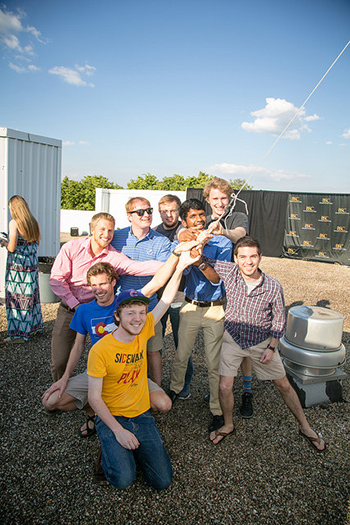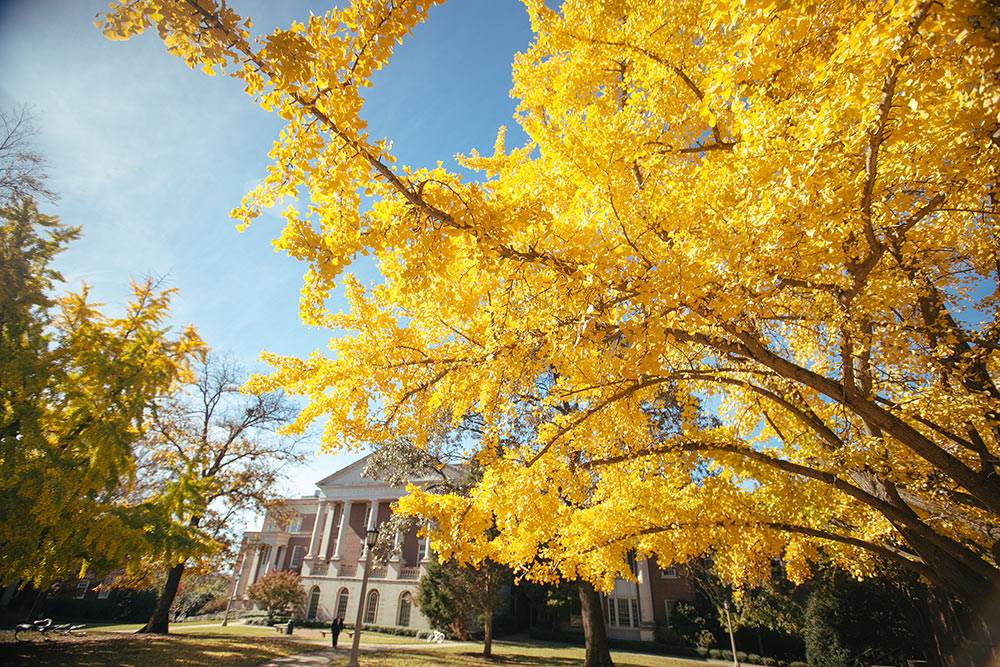
History and Tradition
History and Tradition
Birmingham-Southern College traces its roots back to 1856, the year the Alabama Legislature chartered Southern University as a Methodist institution; the following year, the school’s cornerstone was laid in Greensboro, Ala.
In 1859, Southern University opened with 52 students—many of whom left two years later to fight in the Civil War, which left the institution depleted. A decade after its founding, only 28 students remained. But, under a renewed commitment by Methodist leadership, Southern University rose again, building to 238 students in 1889 and graduating its first woman in 1897.
A year later and about 100 miles away, the North Alabama Conference College opened on a hilltop west of the young city of Birmingham; in 1906, the school changed its name to Birmingham College. The school began to flourish—the first of six BSC Rhodes Scholars was named in 1910—but, in an echo of Southern University, the United States’ entry into World War I depleted the student body.
On May 30, 1918, Southern University merged with Birmingham College on that hilltop location—the same referred to in the college’s alma mater:
“On the city's western border
Reared against the sky,
Proudly stands our alma mater
As the years go by.”
In 1921, U.S. President Warren Harding inaugurated Guy Snavely as the newest president of Birmingham-Southern College. Snavely set about—and succeeded—building the finest undergraduate institution in the state. In 1931, for the college’s 75th anniversary celebrations, Stockham Hall was built; 1935, the undefeated BSC football team won the Dixie Conference; in 1927, the college received the state’s second Phi Beta Kappa chapter, which it still holds.
But once again, war changed the face of the college. By the end of 1941, the campus had lost most of its male students and faculty. In future years, BSC would not be sheltered from conflict, both local and national. In 1965, the college enrolled its first black students; some BSC students had previously joined their African-American peers from other institutions to fight for civil rights. College leaders contemplated moving the college out of Birmingham in the 1970s, but then-Pres. Dr. Neal Berte held fast to the vision of the college on the city’s western border—and helped build the institution to a nationally-ranked liberal arts college with an innovative curriculum and a commitment to student success.
Traditions to be proud of:
-
“Forward, Ever!”
More than a catchphrase, “Forward, Ever!” is drawn from the third and fourth verses of the college’s alma mater, which are:
“"Forward ever!" Be our watchword;
Conquer and prevail,
Hail to thee our alma mater
BSC, all hail!” -
Senior Bellringing
 Each spring, on the last day of classes, seniors climb the stairs to the roof of the Berte Humanities Building to ring the college bell to celebrate the completion of their undergraduate academic career. The rooftop--otherwise inaccessible to students--also offers them a bird's-eye view of the academic quad where they've spent their previous years. Once a low-key affair, the bell ringing has become a celebratory moment, with cake and other congratulations for the seniors before they begin their preparation for Commencement.
Each spring, on the last day of classes, seniors climb the stairs to the roof of the Berte Humanities Building to ring the college bell to celebrate the completion of their undergraduate academic career. The rooftop--otherwise inaccessible to students--also offers them a bird's-eye view of the academic quad where they've spent their previous years. Once a low-key affair, the bell ringing has become a celebratory moment, with cake and other congratulations for the seniors before they begin their preparation for Commencement. -
Walking Through

On their first day at BSC, new students begin their journey by entering Battle Coliseum for Convocation, walking through the faculty--their future professors. At Commencement, they complete the circle, exiting through a line of professors who have in that time come to know them well, and who applaud them and offer hugs and high fives.
-
The Ginkgo
About the Ginkgo

Walk north on the winding path from Stockham to Munger Memorial Hall any sunny afternoon in fall and you will find a scene that lives in the memory of thousands of Birmingham-Southern graduates—our two golden ginkgoes shimmering against a bold blue sky. The ginkgo tree holds a spot of special honor on the Birmingham-Southern campus, and not for its simple beauty alone.
Darwin called the ginkgo "a living fossil." Ginkgo biloba, the graceful ornamental we know, is the only remaining species of a venerable genus that flourished with the dinosaurs. The ginkgo is said to be the oldest living seed-bearing plant, and, as such, it has become a symbol of longevity and of hope.
At Birmingham-Southern, our own beloved pair of ginkgoes have been part of the landscape for decades, bearing fruit, providing shade, brightening the skyline with fall and spring color, and passing into local legend. Members of the ’Southern community like to reminisce about the late Dr. John Strohl, a chemistry professor who started dozens of seedlings from our trees and passed them along, becoming our own academic "Johnny Appleseed."
Rooted deep near Munger Hall, these ginkgoes are part of our past and of our future. It seems fitting, then, that the ginkgo—our ginkgoes—should be a symbol of appreciation for that dedication. They grace the Hilltop and represent enduring qualities of generations of Birmingham-Southern alumni—the loyalty and generosity that nurture the continuing mission of our college and assure its success in an uncertain future.

